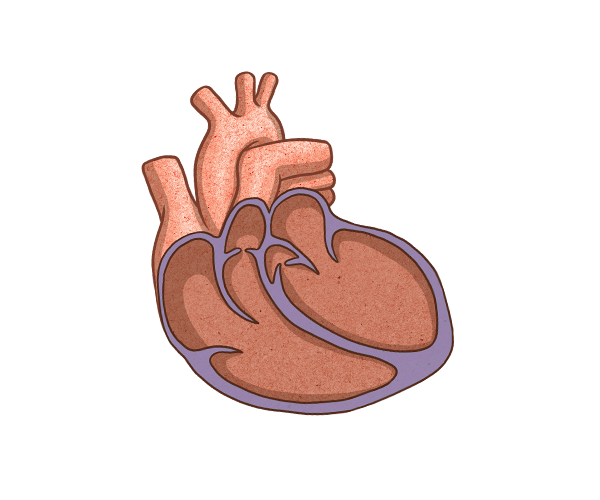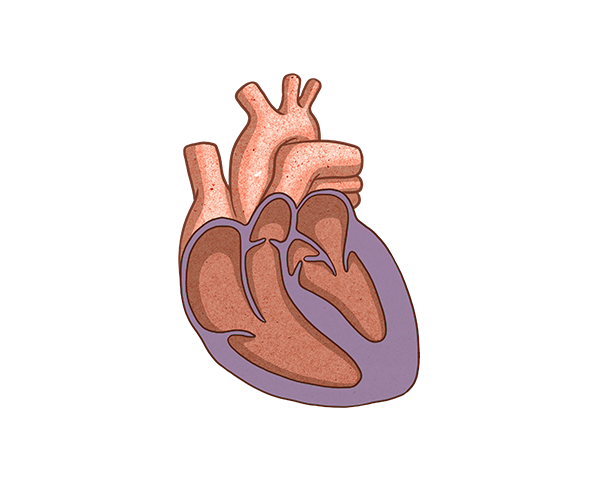Heart failure involves structural and/or functional changes to the heart1,2
Complex mechanism of disease
Heart failure is a complex, progressive syndrome. Causes may include2,3:
Ischemic cardiomyopathy caused by conditions such as coronary artery disease4
Nonischemic cardiomyopathy caused by conditions such as high blood pressure, infections, metabolic disorders, or genetic predisposition4
The sympathetic nervous system and the renin-angiotensin-aldosterone system activate to compensate for these pathologies to help maintain circulatory homeostasis.2,3 Prolonged activation of these systems becomes harmful, contributing to the HF disease process.2,3
The natriuretic peptide system is also activated as a counter-regulatory mechanism.
Morphological changes by HF classification
LVEF is used to help classify patients with HF and inform prognosis and potential treatments.1 Each classification of heart failure is characterized by different types of structural and/or functional cardiac abnormalities.4,5 These characteristics are what contribute to the reduced cardiac output and/or elevated intracardiac pressures at rest or during stress.6

HFrEF heart
LVEF ≤40%1
Systolic dysfunction (impaired LV contraction)5,7
Eccentric remodeling7
- Low LV mass to volume ratio7
- LV dilatation (enlargement) and normal wall thickness5
Often preceded by cardiomyocyte loss due to ischemia, genetic mutation, myocarditis, or valvular disease5

HFpEF* heart
LVEF ≥50%1
Diastolic dysfunction (impaired LV filling)6,7
Concentric LV hypertrophy (remodeling)7-9
- High LV mass to volume ratio7
- Thickened LV wall5
LV stiffness5 and/or enlarged left atrium (indicative of increased LV filling pressures)2,6
Often patients have chronic comorbidities (eg, hypertension, T2DM, obesity, renal insufficiency)
*In PARAGON-HF, defined as LVEF ≥45% with structural heart disease (LAE or LVH); median LVEF was 57%. LVEF is a variable measure and the normal range can vary.14
†In the 2022 AHA/ACC/HFSA Heart Failure Guideline, ENTRESTO is recommended as a first-line treatment and to replace well-tolerated ACEi/ARB in patients with NYHA Class II–III HFrEF (Class 1 recommendation).
